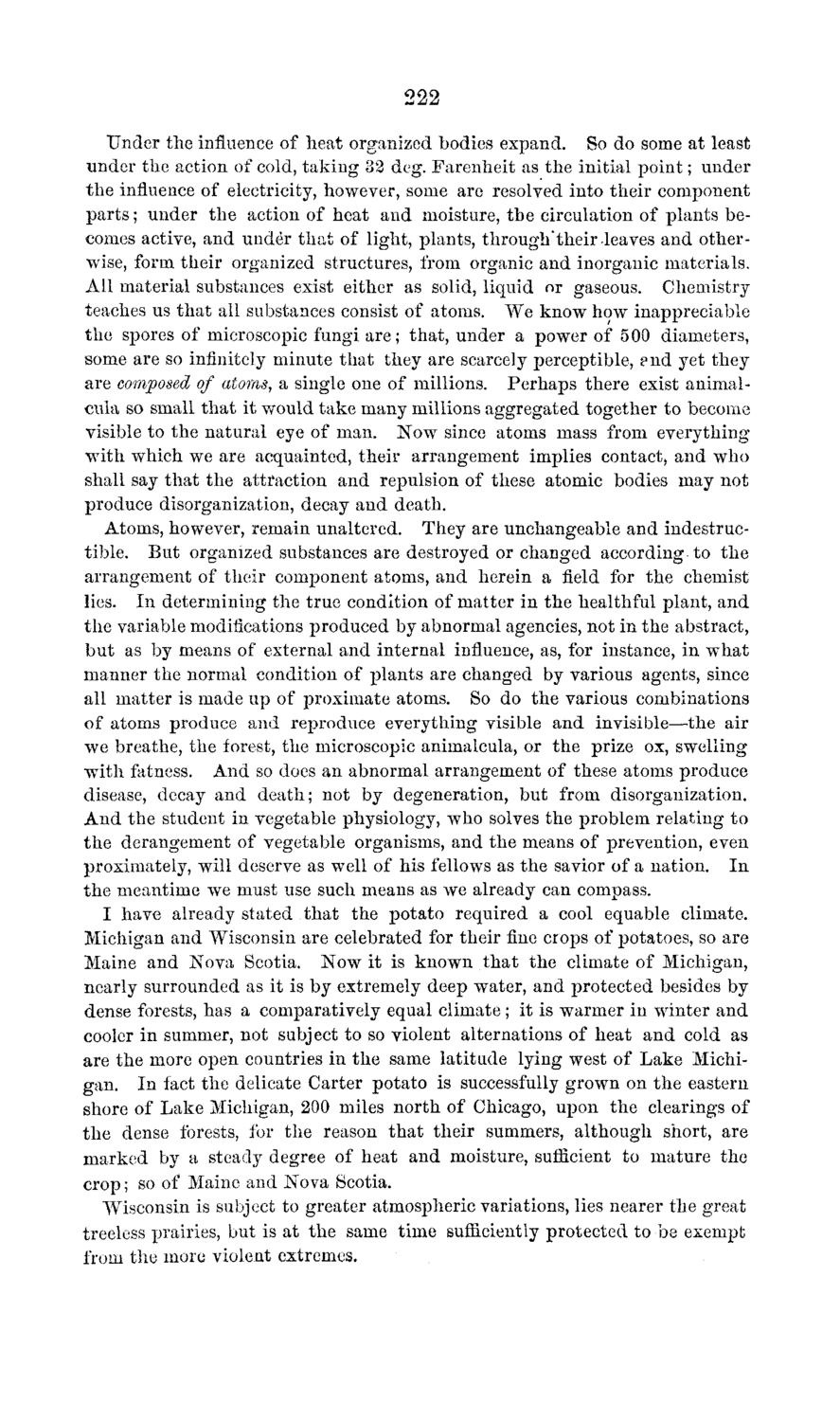| |
| |
Caption: Board of Trustees Minutes - 1869
This is a reduced-resolution page image for fast online browsing.

EXTRACTED TEXT FROM PAGE:
222 Under the influence of heat organized bodies expand. So do some at least under the action of cold, t a k i n g 82 deg. Farenheit as the initial p o i n t ; under t h e influence of electricity, however, some are resolved into their component p a r t s ; under the action of heat and moisture, the circulation of plants becomes active, and under that of light, plants, through'their leaves and otherwise, form their organized structures, from organic and inorganic materials. All material substances exist either as solid, liquid or gaseous. Chemistry teaches us that ail substances consist of atoms. We know how inappreciable the spores of microscopic fungi a r e ; that, under a power of 500 diameters, some are so infinitely minute that they are scarcely perceptible, end yet they are composed of atoms, a single one of millions. Perhaps there exist animalcula so small that it would take many millions aggregated together to become visible to the natural eye of man. Now since atoms mass from everything with which we are acquainted, their arrangement implies contact, and who shall say that the attraction and repulsion of these atomic bodies may not produce disorganization, decay and death. Atoms, however, remain unaltered. They are unchangeable and indestructible. But organized substances are destroyed or changed according to t h e arrangement of their component atoms, and herein a field for the chemist lies. In determining the true condition of matter in the healthful plant, and the variable modifications produced by abnormal agencies, not in the abstract, b u t as by means of external and internal influence, as, for instance, in w h a t manner the normal condition of plants are changed by various agents, since all matter is made up of proximate atoms. So do the various combinations of atoms produce and reproduce everything visible and invisible—the air we breathe, the forest, the microscopic animalcula, or the prize ox, swelling with fatness. And so does an abnormal arrangement of these atoms produce disease, decay and death; not by degeneration, but from disorganization. A n d the student in vegetable physiology, who solves the problem relating to the derangement of vegetable organisms, and the means of prevention, even proximately, will deserve as wTell of his fellows as the savior of a nation. I n the meantime we must use such means as we already can compass. I have already stated that the potato required a cool equable climate. Michigan and Wisconsin are celebrated for their fine crops of potatoes, so are Maine and Nova Scotia. Now it is known t h a t the climate of Michigan, nearly surrounded as it is by extremely deep water, and protected besides by dense forests, has a comparatively equal climate; it is warmer in winter and cooler in summer, not subject to so violent alternations of heat and cold as are the more open countries in the same latitude lying west of Lake Michigan. In fact the delicate Carter potato is successfully grown on t h e eastern shore of Lake Michigan, 200 miles north of Chicago, upon the clearings of t h e dense forests, for the reason that their summers, although short, are marked by a steady degree of heat and moisture, sufficient to mature the crop; so of Maine and Nova Scotia. Wisconsin is subject to greater atmospheric variations, lies nearer the great treeless prairies, but is at the same time sufficiently protected to be exempt from the more violent extremes.
| |